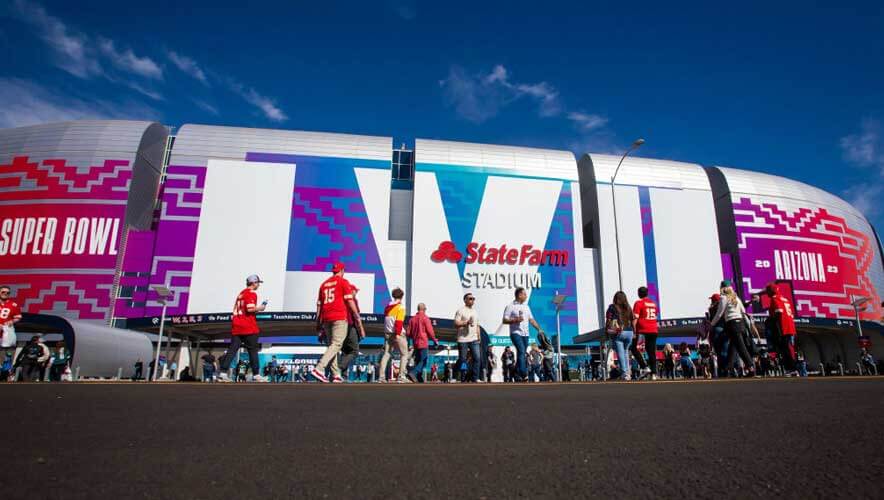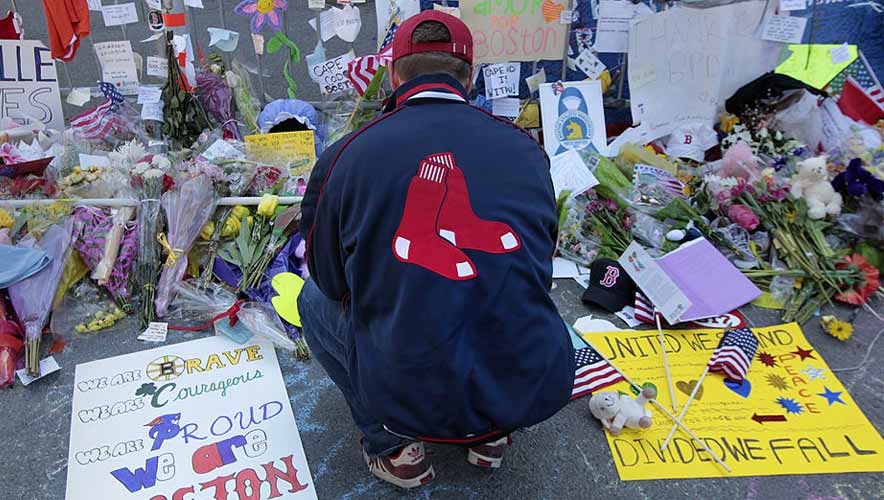Scalable Event Management, Phoenix Style
While Phoenix, Arizona, is the fifth largest city in the United States with a population of 1.6 million residents, it’s number one when it comes to geographic size. Arizona’s capital city spreads across 517 square miles, exceeding even the size of Los Angeles, California.
“We have some urban sprawl. We don’t build up. We build out,” says Brian Lee, emergency management commander for the Phoenix Police Department. Lee has lived in Phoenix since 1979, and during that time he’s seen the southwestern mecca grow both in geographic size and population.
People are drawn to the area for its landscape, its vibrant art scene, and, increasingly, major events.
Phoenix has hosted the National Football League’s (NFL’s) Super Bowl four times, the Waste Management Phoenix Open where professional golfers compete for a prize of $20 million, and Pat’s Run—the annual fundraising event to support the Pat Tillman Foundation’s Tillman Scholars Program.
As the size of events has increased, so too have the security threats and contingency plans. Lee’s primary role as the commander for emergency management is to provide coordination and collaboration for the city for any planned event or unplanned incident—such as a natural disaster. He oversees a small office with two deputy coordinators that works with the city’s coordinating partners and stakeholders.
When they are planning for special events, all coordination is done by Phoenix’s Homeland Defense section. Officers from the police department and fire department are assigned to the effort, and a unified command system is used in accordance with U.S. Federal Emergency Management Agency (FEMA) guidelines.
In March 2011, then U.S. President Barack Obama issued presidential policy directive-8 to strengthen the security and resilience of the United States through “systemic preparation for the threats that pose the greatest risk to the security of the nation.”
The directive set out a plan to develop a national preparedness goal that identifies core capabilities necessary for preparedness and a national preparedness system to guide activities to achieve that overarching goal. This led to the creation of the National Preparedness System, comprising the six steps below and managed by FEMA:
- Identifying and Assessing Risk: The National Risk and Capability Assessment
- Estimating Capability Requirements: Core Capabilities and Mission Areas
- Building and Sustaining Capabilities: The National Incident Management System
- Planning to Deliver Capabilities: The National Planning System
- Validating Capabilities: Emergency Planning Exercises
- Reviewing and Updating
“We follow the doctrine of FEMA to make sure when we plan for things we’re following that—it’s our bible,” Lee explains.
What’s NIMS?
In the 1970s, the U.S. State of California was on fire. More than 770 wildfires were burning in southern California that destroyed more than 570,000 acres in a 13-day period, according to Wildfire Today. One of the main challenges in containing them was that there was no interagency standard to create a management structure to respond to an emergency or share resources across agency and state boundaries.
To mitigate this issue, U.S. local, state, and federal agencies created the Firefighting Resources of California Organized for Potential Emergencies (FIRESCOPE) to change the way wildfires were managed to create a standardized Incident Command System (ICS) and Multiagency Coordination System (MACS).
That system would become the basis for the National Incident Management System (NIMS), which is managed by FEMA and was most recently updated in 2017. NIMS provides guidelines for government agencies, nongovernmental organizations, and the private sector to work together to prevent, protect against, mitigate, respond to, and recover from incidents.
“NIMS provides stakeholders across the whole community with the shared vocabulary, systems, and processes to successfully deliver the capabilities described in the National Preparedness System,” according to NIMs. “NIMS defines operational systems, including the Incident Command System (ICS), Emergency Operations Center (EOC) structures, and Multiagency Coordination Groups (MAC Groups) that guide how personnel work together during incidents. NIMS applies to all incidents, from traffic accidents to major disasters.”
Implementing NIMS in Phoenix
The city of Phoenix uses NIMS philosophies for unified command systems and incident management to plan for major events throughout the year.
“It helps keep us on track and on cycle,” Lee says, explaining that with major event planning coordination may begin months—if not years—in advance. Utilizing the Arizona Homeland Defense Bureau and Lee’s office, Phoenix Police and Fire Departments work hand-in-hand to coordinate meeting cycles to bring resources and personnel together.
For the Super Bowl, most recently hosted in Phoenix in February 2023, the region used a Multi-Agency Coordinating Center concept outlined in NIMS to work with local, state, and federal partners. This begins with an agency administrator briefing where chiefs of all the departments are brought in for a review of the event and to obtain buy-in in the planning process.
Then, 26 working groups were created—two more than were stood-up when planning for the 2015 Super Bowl, enabling the center to create focus groups for drones and GIS (geographic information systems). Working groups also encompassed other security areas, including bombs, canines, street closures, dignitary protection, and more.
There would be a larger meeting once a month with agency administrators and the core planning group that oversaw the working groups. Phoenix also had four levels of review across its plans before preparations were put into place.
As plans were created, the working groups also ran tabletops to test them and ensure that stakeholders knew what the correct responses were should an incident occur. They completed nine tabletops total—some facilitated by working groups and others facilitated by the FBI that focused on cyberattacks and stadium security.
“There was a lot of good discussion and lessons learned shared,” Lee says, adding that this was valuable since there were a lot of new personnel coming in who had not participated in Super Bowl planning before and needed the training.
Every Super Bowl gets more technical, and it’s more of a challenge to identify each agency staffer.
Additionally, as game day approached, Phoenix worked with a steering committee group to bring together multiple city departments to create a public outreach campaign to inform the public of what they could do, what they couldn’t do, and what to expect at Super Bowl-related events.
After the event, Phoenix completed an after-action review. It has a dedicated planning section, Lee explains, responsible for documenting the planning process and situation reports during the event itself. After the documentation is collected, the working groups and agency leaders receive a survey about the process that is reviewed to determine what needs adjustment before the next event planning cycle starts.
During the 2015 Super Bowl, for instance, one of the major challenges for every jurisdiction involved was credentialling people who needed role-based access to event locations.
“Every Super Bowl gets more technical, and it’s more of a challenge to identify each agency staffer, forecast what their assignment is going to be, and where they’ll be to determine their access level,” Lee says. This becomes more of a logistical nightmare when a long-term planning process is involved since personnel who may have originally been assigned to one location may now work for a different agency in a different role, requiring a new level of access.
Based on feedback from that Super Bowl, for the 2023 event the planning committee set up a credentialing working group where individual members were assigned a specific agency to handle—such as the police department. This helped split the burden and ensure that the working group was hitting its goals to process credentials in a more streamlined manner.
Another major change that the city needed to address in planning for the 2023 Super Bowl was that its police force was down more than 500 officers since the 2015 Super Bowl—part of a national trend of police staffing shortages.
“We had to be strategic to cover the public safety needs in a way that was much more efficient for us,” Lee explains.
Key to this was ramping up Phoenix’s technology infrastructure. The city upgraded its camera system downtown, which had experienced significant wear and tear due to the extreme heat that equipment is exposed to outdoors in Arizona. In 2023, for instance, Phoenix set a U.S. record of more than three continuous weeks where temperatures exceeded 110 degrees Fahrenheit (43 degrees Celsius).
The upgraded camera system came into play during the 2023 Super Bowl when an individual stole some expensive temporary lighting that was staged in a downtown parking structure. Phoenix Police received a report of a vehicle that was leaving the parking garage with the lighting.
“Within a few seconds, we pulled up the camera to capture that corridor; identify the vehicle; take a photo of the driver, truck, and plate,” Lee explains. The department then used this information to work backwards, following up on leads over a day-and-a-half to identify the vehicle and take the suspected driver into custody. “And we were able to recover the equipment—that was a real-time win for us.”
The city also developed and stood up its drone program in December 2022. The police department wanted to use the drones with its crime mapping software to support investigation groups. The drones are now used to conduct crime scene mapping overhead, such as for homicides and traffic fatalities, as well as to support tactical assignment units.
Phoenix Police Department has approximately 12 drone pilots with the required Federal Aviation Administration (FAA) certification to operate a drone because they had obtained the certification prior to the creation of the department’s drone program. The department also created internal policies for drone operation—the do’s and don’ts—as well as how to impound them.
Lee wrote the policies for the drone program, as well as researched how drones could be used for a special event management system to obtain real-time operational information from remote sites along with other operational uses. They were initially used during the Fiesta Bowl parade in December 2022, followed by the Arizona Public Service Parade—called the Electric Light Parade—before making their Super Bowl debut.
“That helped us make more efficient and informed decisions. The use of the drones was a game changer,” Lee adds.
On the Monday before the 2023 Super Bowl, for instance, an individual decided to free-climb the exterior of the Chase Bank building—a 40-story skyscraper in downtown Phoenix.
“We used the drone to elevate with that person to identify any impediments, that there were no ropes or lines because this person scaled the building with no assistance,” Lee says. The drone “helped us provide avenues to shut-down streets, and it enabled us to keep eyes on the actual climber.”
Once the climber made it to the top of the building, he was identified as Maison DesChamps and arrested on charges of trespassing and criminal nuisance.
Additional Planning
While the Super Bowl is a unique event that requires nearly a year of extensive event pre-planning, Phoenix uses a similar—if somewhat smaller—approach to planning and managing security risks to other events.
“That’s the beauty of the system—it’s scalable. You can build it up and build it down, so you can right-size,” Lee adds.
This ability is coming in handy as Phoenix is already preparing for its next major event—the National Collegiate Athletic Association (NCAA) basketball Final Four in April 2024.
“We’re starting to brush off of the plans from the Super Bowl, reengage, and bring those partners together,” Lee says. “It’ll be a slightly smaller scale, but the process is pretty much the same. We’re excited for that and excited to put Pheonix in the national spotlight again. We’ve had some great successes with the planning we’ve had, but we’re always innovating and looking for efficiencies. We’re anxious to see what lies ahead.”
Megan Gates is senior editor at Security Management. Connect with her at [email protected] or on LinkedIn. Follow her on Twitter or Threads: @mgngates.












